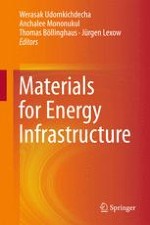2016 | OriginalPaper | Buchkapitel
The Influence of Temperature and Ventilation Conditions on Combustion Products of Polymers and on Smoke Toxicity
verfasst von : Andrea Loehnert, Christian Knaust
Erschienen in: Materials for Energy Infrastructure
Verlag: Springer Singapore
Aktivieren Sie unsere intelligente Suche, um passende Fachinhalte oder Patente zu finden.
Wählen Sie Textabschnitte aus um mit Künstlicher Intelligenz passenden Patente zu finden. powered by
Markieren Sie Textabschnitte, um KI-gestützt weitere passende Inhalte zu finden. powered by
